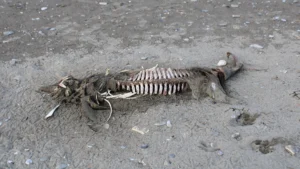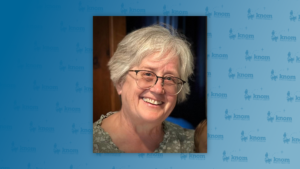Coastal Villages Region Fund (CVRF) is trying to drum up more support for its Just Fix CDQ campaign, which aims to change fishery allocations the nonprofit says is unfair. To do that, it’s holding a series of community meetings, including one in Nome last week.
The federal community development quota (CDQ) system was created in 1992 to give Western Alaska communities an economic boost by setting aside a part of the Bering Sea and Aleutians fisheries for local commercial use.
CVRF says even though it has the highest population of the six CDQ groups — 9,341 residents, about 36 percent of the total CDQ-eligible population — it only gets 15 percent of the fish. And so it doesn’t earn as much money per person to put into programs in its Kuskokwim-Delta communities, from Scammon Bay to Platinum.
“We were aware that there is a housing crisis in many of our communities. We just didn’t register how dire of an issue it was.”
That’s Michelle Humphrey, the CVRF outreach manager. According to a recent survey CVRF conducted, 28 percent of respondents said housing was the biggest challenge facing their community, second only to making money.
“Housing is not an easy or inexpensive problem to address, so we’re hoping if the allocations get fixed, we’ll have more revenue to address the housing situation in many of our communities.”
But to get the allocations “fixed” involves Congress changing legislation. And Alaska’s congressional delegation says it won’t consider broaching the issue unless all six CDQ groups reach consensus.
So with Congressman Don Young up for re-election, CVRF is trying to make some waves with voters, says Board Chairman Richard Jung.
“The election coming up this year is important. And if we get a change, or if we get a better response from our representatives, maybe we’ll get a change. But right now, we’re very hopeful. It will change, because it’s got to change. It’s just too unfair. It’s just not good for any of us.”
That’s what Jung was trying to convince Norton Sound-area residents of on Friday. CVRF says Norton Sound Economic Development Corporation’s (NSEDC’s) area also has one of the highest populations among the CDQ groups and would stand to gain a lot from re-allocation.
The groups that stand to lose fish, and money, are the smallest: Central Bering Sea Fisherman’s Association (CBSFA), with 322 residents, and Aleutian Pribilof Island Community Development Association (APICDA), with 387. In a written statement, CBSFA says it’s opposed to CVRF’s campaign:
“It is clear CVRF is one of the wealthiest of the six groups, and has the ability to provide benefits for their communities. … Comparing communities that have subsistence economies, like CVRF villages, to Aleutian or Bristol Bay communities that have fisheries-based economies is comparing apples and oranges. … The implementation of the CVRF proposal to base allocations on population only would result in serious disorder, including the possible end of two of the smaller CDQ groups.”
For its part, NSEDC doesn’t want to wade into a political battle with other CDQ groups or the congressional delegation. Chief Operating Officer Tyler Rhodes says even though they were informed about it ahead of time, NSEDC wasn’t too happy that CVRF held a community meeting in Nome. He says what CVRF is doing is not the most constructive move.
“When you look at what CVRF is saying, it’s kind of a perfect, fairy-tale approach in that the whole program would have to be changed in order to have it be based solely on population. And to have the groups working together to champion something means it has a much better chance of getting done.”
Rhodes says NSEDC leadership offered to meet jointly with CVRF to discuss the groups’ differing viewpionts, but CVRF declined.
He says there are other factors besides population that determine the allocations, like how close the communities are to the fish. NSEDC is trying to focus on doing the most with what it has, Rhodes says, and that there are also items in the works that could bring benefits to all the groups without a big restructuring. He wouldn’t say yet what those are.
CVRF’s Humphrey says the organization plans to hold at least five other community meetings across Western Alaska this summer but hasn’t nailed down dates or locations.
Emily Hofstaedter and Davis Hovey contributed reporting on this story.
This story has been updated.
Correction: An earlier version of this story mistakenly indicated that NSEDC did not take issue with CVRF holding its own community meeting in Nome.
Image at top: Alaska salmon (photo: Isaac Wedin, Creative Commons).





